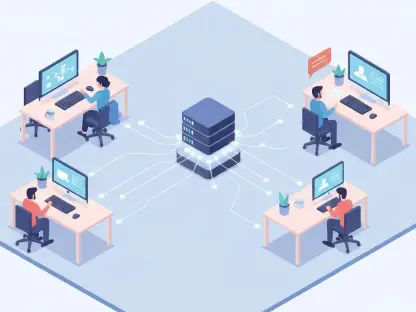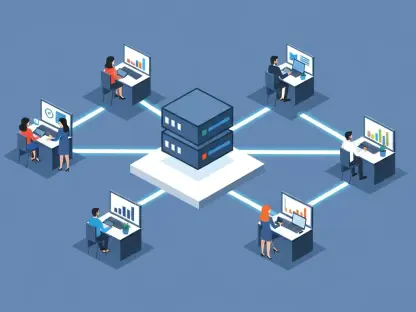In the fast-paced world of ad tech, where every millisecond can mean the difference between profit and loss, few understand the intricacies of real-time system optimization as well as Vijay Raina. As a seasoned expert in enterprise SaaS technology and software architecture, Vijay has spent years designing and refining high-performance systems that handle billions of requests with precision. Today, we dive into his insights on preventing performance bottlenecks in ad tech platforms, exploring the hidden costs of inefficiencies, the power of proactive profiling, smart caching strategies, and the importance of disciplined coding practices. Join us as we uncover how micro-optimizations can transform the economics of internet-scale systems.
How does performance impact the bottom line in ad tech systems, and why is it such a critical focus?
Performance is everything in ad tech because these platforms operate at an insane scale. When you’re processing billions of requests daily through auctions and targeting services, even a tiny delay—like a millisecond—can cost you dearly in terms of lost revenue or user experience. With slim margins, where most revenue goes to publishers, every CPU cycle saved directly boosts profit. It’s not just about speed; it’s about building systems that scale efficiently without ballooning costs. If you ignore performance, you’re essentially burning money on wasted compute resources that could’ve handled more load or avoided extra hardware expenses.
What are some of the less obvious consequences of inefficiencies in real-time systems that leaders might overlook?
Beyond the obvious latency hits, inefficiencies sneak in costs like increased CPU spikes or garbage collection pressure, which degrade system stability over time. A small 0.1% slowdown in request handling might not sound like much, but across millions of requests per second, it translates to millions of wasted CPU cycles daily. That’s capacity you could’ve used for additional throughput. Then there’s the ripple effect—poor cache hit rates or memory bloat can force premature scaling, driving up infrastructure costs. These issues don’t break functionality, so they often fly under the radar until they’ve already drained significant resources.
Can you explain the role of systematic profiling in maintaining performance, and why it’s so essential?
Systematic profiling is your first line of defense against performance drift. Code reviews catch logical errors, but they won’t spot subtle inefficiencies like a new library chewing up more memory or a conditional branch firing too often. By embedding profiling into your deployment pipeline, you catch these regressions before they hit production. Tools like flame graphs let you visualize hotspots and compare performance before and after changes. I’ve seen cases where a minor library update spiked CPU usage by just 2% in a low-traffic path, but in production, that cost exploded into hundreds of thousands of wasted compute hours monthly. Profiling turns firefighting into prevention.
How does caching play a transformative role in real-time systems, and what pitfalls should teams watch out for?
Caching is a game-changer because it slashes latency on frequently accessed data, which is critical in ad tech where hot paths need to respond instantly. But it’s easy to mess up. A common pitfall is caching entire objects when you only need a subset of the data. That inflates memory usage and slows lookups, killing your efficiency. I’ve worked on systems where trimming cached data by 20% boosted L3 cache hit rates and cut request latency by 8%. At scale, those microsecond savings add up to smoother operations and lower costs. The key is discipline—cache lean, and only what you need.
What are some common mistakes developers make when handling collections, and how can these be avoided?
Developers often trip up by not initializing collections, like ArrayLists in Java, with the right size. Without a predefined capacity, the system resizes and copies the array as it grows, which is pure overhead in high-frequency paths. Another mistake is creating placeholder collections ‘just in case’ that end up unused, wasting allocations and stressing garbage collection. The fix is simple: initialize with expected sizes and only instantiate when necessary. I’ve seen targeted optimizations in collection handling cut GC pause times by 12% under peak load in an ad tech platform, directly improving throughput and reducing latency spikes.
How can reducing redundant computations in request-handling paths lead to significant performance gains?
Redundant computation is a silent killer. Think about parsing or validating data—like converting strings to integers—on every single request when it could be done once at load time. That’s wasted CPU cycles and added latency for no gain. The principle of ‘don’t repeat yourself’ applies here. In one system I optimized, we eliminated redundant validation checks that upstream services had already handled, shaving 4 milliseconds off average request latency. That might sound small, but across a fleet, it freed up thousands of CPU cores. Pre-parsing and validating at the right stage can unlock massive efficiency.
Why is it problematic to use exceptions for control flow in high-frequency code, and what’s a better approach?
Exceptions in Java are expensive because they involve stack unwinding and object creation, which is a nightmare in hot loops or high-frequency paths. Using them for normal control flow, instead of rare error cases, creates performance cliffs—small error rate increases can cause huge latency spikes under load. A better approach is upfront validation to avoid exceptions altogether. I’ve seen systems stabilize dramatically by replacing exception-driven logic with simple checks, especially in ad auctions where predictable latency is critical. It not only cuts overhead but also makes behavior more consistent during traffic bursts.
What’s your forecast for the future of performance optimization in ad tech systems as workloads continue to grow?
I think we’re heading toward even tighter integration of performance as a core design principle, not an afterthought. As workloads grow with more data and user expectations for instant responses, ad tech will lean heavily on automation—think AI-driven profiling and self-optimizing architectures that adapt in real time. We’ll see more focus on micro-batching and edge computing to cut network latency, alongside cultural shifts where efficiency is baked into every line of code. The stakes are too high for waste, so the future will reward platforms that master these disciplines, turning scale into a competitive edge rather than a cost burden.









